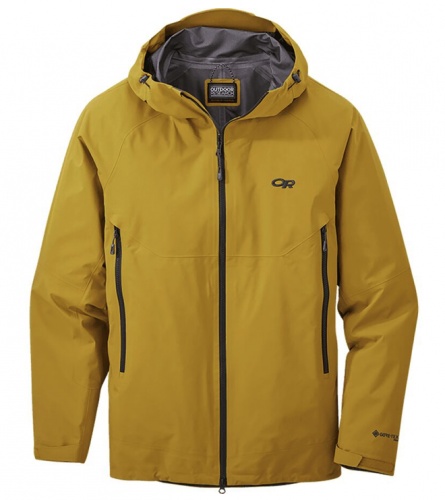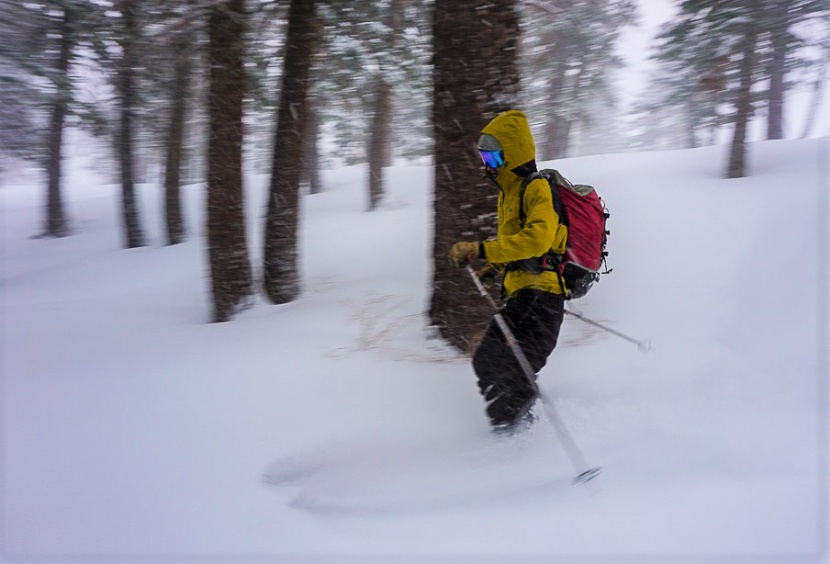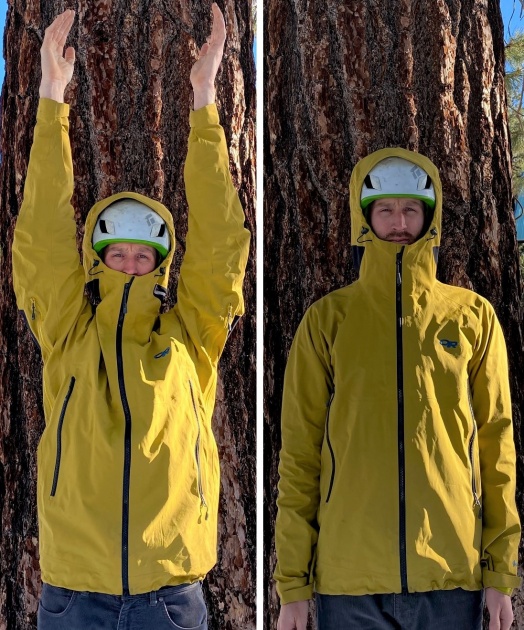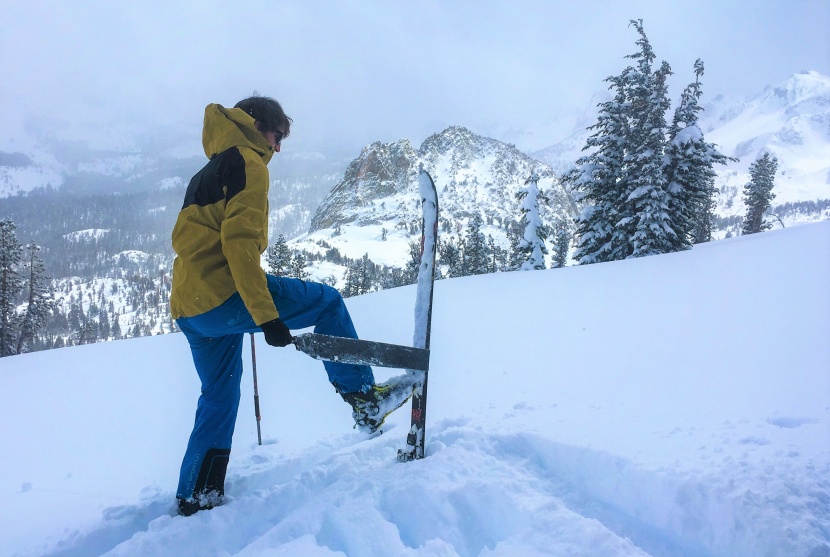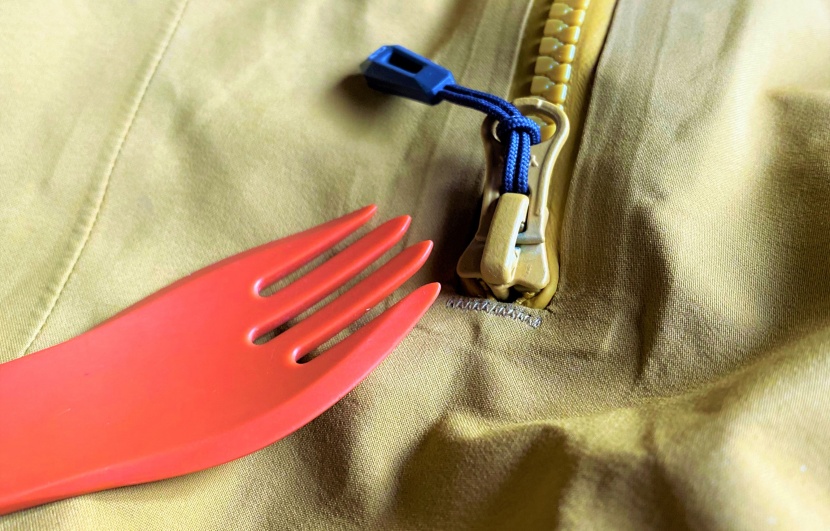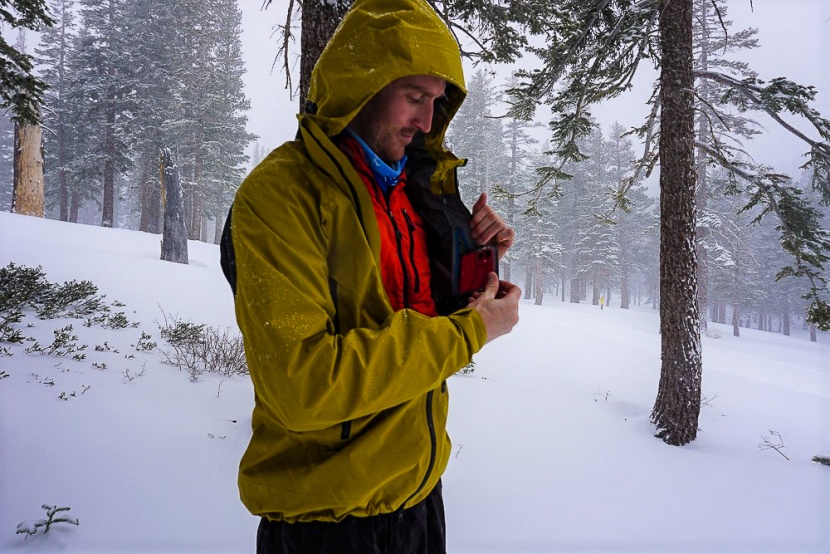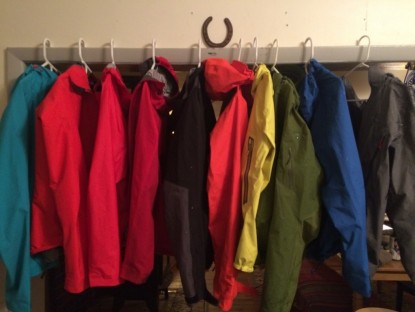Outdoor Research Archangel Review
Our Verdict
Our Analysis and Test Results
Weather Protection
The foundation for the Archangel's weather protection is 3-layer Gore-Tex Pro fabric. This is the most common fabric among jackets in the hardshell category and also our reviewer's favorite. We've consistently found this material to be fully waterproof and sturdy enough to stand up to some abrasion.
The Gore-Tex fabric in high-wear areas also incorporates 70-denier nylon face fabric. Seventy-denier means that it's woven with denser fibers than average, and we believe this makes the material more durable than many other jackets. Keep in mind, however, that the stretchy panel of fabric across the upper back and shoulders is only 40-denier, so it might not hold up to wear from backpack straps as well as the rest of the jacket.
Weight
The biggest drawback to the Archangel is its weight. At 19.4 ounces for a size large, it's 7.5 ounces heavier than the lightest hardshell that offers similar weather protection. That may not sound like much in the grand scheme, but it equates to 63% more mass.
We believe this difference should essentially eliminate the Archangel from consideration for wilderness applications in sunny winter locales like the Colorado Rockies or Sierra Nevada, where you usually end up carrying a hardshell more often than wearing one. In wetter climates, or for side-country skiing, the extra weight shouldn't be seen as such a significant disadvantage.
Mobility and Fit
One area where the Archangel exceeded our expectations was mobility and fit. Most of the jacket is made with 100% nylon fabric, except for a small panel of fabric across the upper back and shoulders. The Gore-Tex Pro material here includes 10% polyurethane fibers to give it some stretchiness. The result is a jacket that conformed to movements better than many others. We were particularly impressed with how well the wrist cuffs and waist hem stayed in place while bending over or extending our arms overhead.
Venting and Breathability
Although Gore-Tex Pro fabric is awesome for weather protection, it's not the most breathable material. All hardshell shoppers should be aware of this issue because it illustrates a tradeoff that seems to apply to most waterproof-breathable fabrics: the tradeoff being that the more waterproof a fabric is, the less breathable it will be.
The Archangel has a couple of features to compensate for its deficiency in breathability. The first is a pair of pit zips to allow underarm venting. These zips are also noticeably long to enhance airflow. Another feature to boost venting is a two-way main zipper. This can make it a little easier to shed heat without undoing your backpack waist belt.
Features and Design
Despite its considerable weight, the Archangel has a modest feature set. It includes three zippered pockets — two in a hand warmer position and another on the inside of the chest. The handwarmer pockets incorporate some netting to separate them into two compartments. We believe this netting would be more useful if it were sewn inside the jacket to create drop pockets for stashing a pair of gloves for ski skins.
Under close inspection, we're not huge fans of the YKK Aquaguard Vislon zippers used for most of this jacket's closure. Although the large plastic teeth are easy to operate, they aren't fully sealed at the ends. Snow probably won't get through the small opening, but liquid water could get in during a heavy downpour.
Value
This jacket is among the most expensive in the category. That might be fine if it performed the best, but we don't believe that it does. The zippers that don't fully seal are particularly disappointing at this price — kind of inexcusable for a technical hardshell. All in all, we consider this jacket to be a poor value compared to its peers.
Conclusion
There is plenty to like about the Archangel. We think it provides great weather protection and exceptional mobility. It also looks nice. But if you analyze things more critically, some problems appear. Its high price and sizeable weight seem unjustified when you consider its modest feature set. At the same time, the lack of features diminishes its usefulness for resort skiing or other winter activities close to the trailhead. Instead, this jacket occupies an unfortunate middle ground — too heavy for the backcountry, too minimalist for the frontcountry. The Archangel could still be a good choice for ice climbing or sidecountry skiing, but that niche seems too small to justify the hefty price tag.


